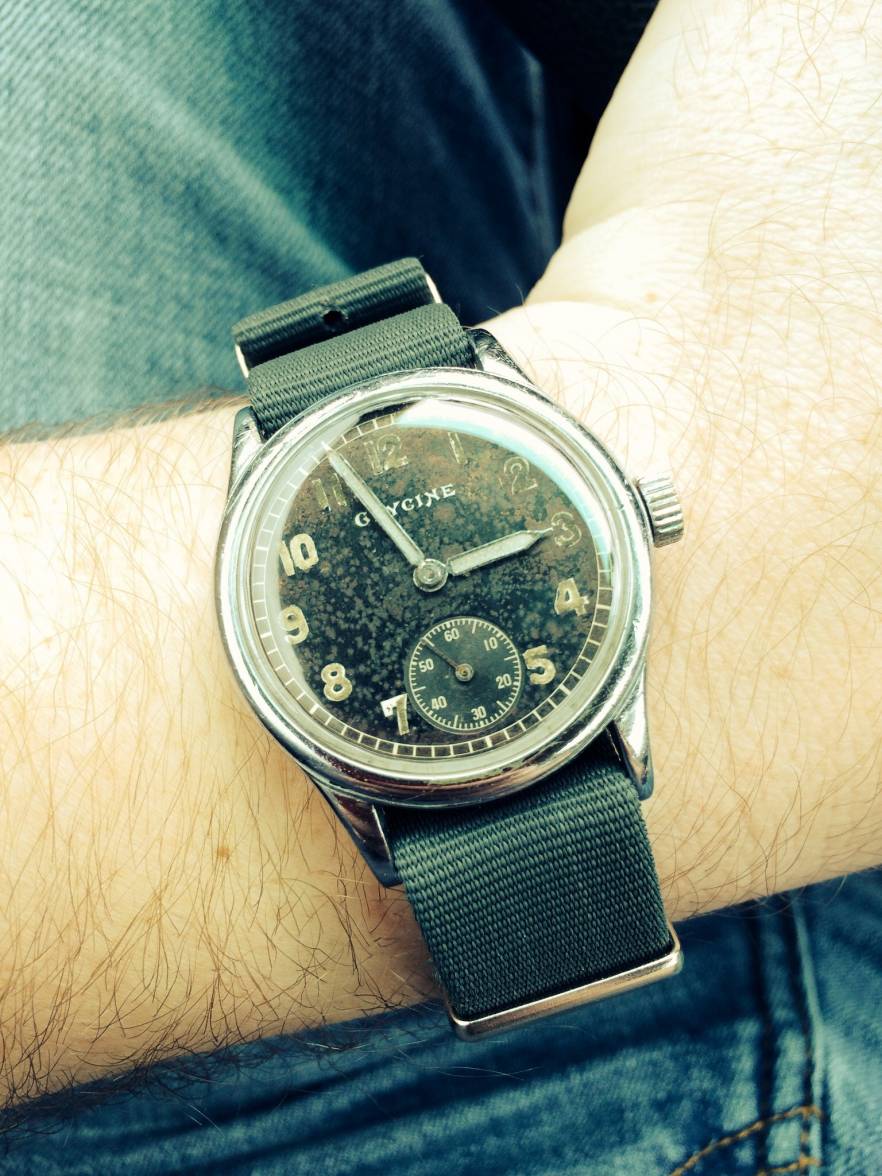speedbird
·I recently had the opportunity to purchase a Glycine Dienstuhr Heer German issued Wehrmacht watch. The "DH" watches were contracted by the Germans during the war to meet the needs of the military for jobs requiring a watch. Many companies provided watches to the German military including names we all know like Glycine, Zenith, Longines, and about 20 more. All of the DH issued watches have the same general characteristics similar to mine below.
The average german soldier couldn't afford a wrist watch in those days, and if his job required one the military would issue one. These were considered state property and the serial number would be recorded in the soldier's pay book and expected to be returned when requested. The soldier had to pay for it if lost or stolen and you couldn't own one outside of military service.
Post war, some soldiers would remove the DH number from the back to conceal their military origins since civilian versions without these numbers had been made. Also, the fact the serial was tied with the records of their pay book and I'm sure elsewhere made it an easy way to tie particular soldiers to specific places.
My Glycine had its numbers removed post-war. If you look carefully you can see the ghosted image of 2 of the numbers. Whoever was issued this watch didn't want anyone to tie it back to him later, or to track his movements during the war. I haven't included any photos of this yet as it'll require me to use my macro lens and I haven't gotten that far yet.
I wore the watch for the photo to capture the patina and for the purposes of sharing it with you folks but I doubt it will be anything more than a curiosity in my collection. It has a creepy factor which can't be overcome.
The movement is an AS1130 and case diameter is 34mm.
The average german soldier couldn't afford a wrist watch in those days, and if his job required one the military would issue one. These were considered state property and the serial number would be recorded in the soldier's pay book and expected to be returned when requested. The soldier had to pay for it if lost or stolen and you couldn't own one outside of military service.
Post war, some soldiers would remove the DH number from the back to conceal their military origins since civilian versions without these numbers had been made. Also, the fact the serial was tied with the records of their pay book and I'm sure elsewhere made it an easy way to tie particular soldiers to specific places.
My Glycine had its numbers removed post-war. If you look carefully you can see the ghosted image of 2 of the numbers. Whoever was issued this watch didn't want anyone to tie it back to him later, or to track his movements during the war. I haven't included any photos of this yet as it'll require me to use my macro lens and I haven't gotten that far yet.
I wore the watch for the photo to capture the patina and for the purposes of sharing it with you folks but I doubt it will be anything more than a curiosity in my collection. It has a creepy factor which can't be overcome.
The movement is an AS1130 and case diameter is 34mm.

